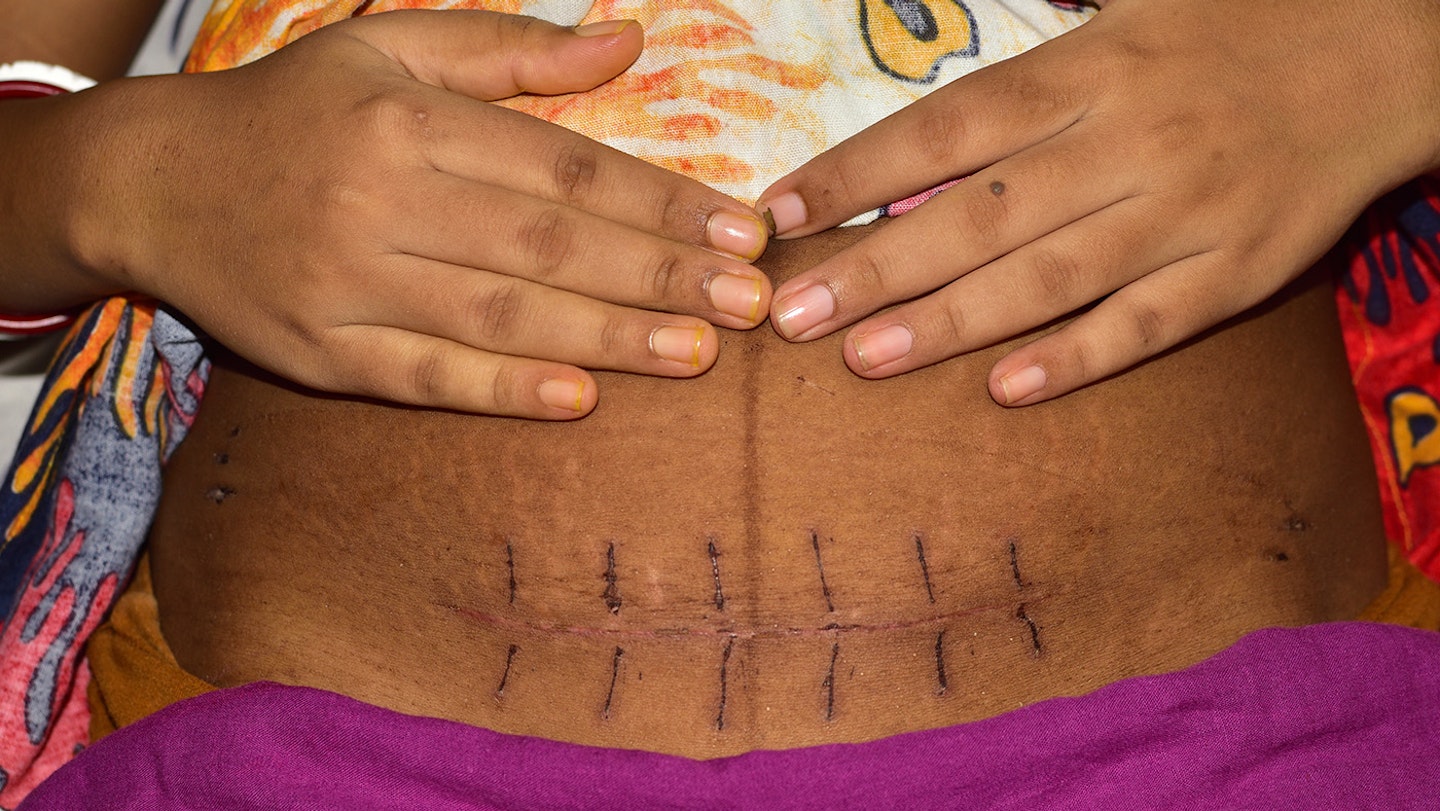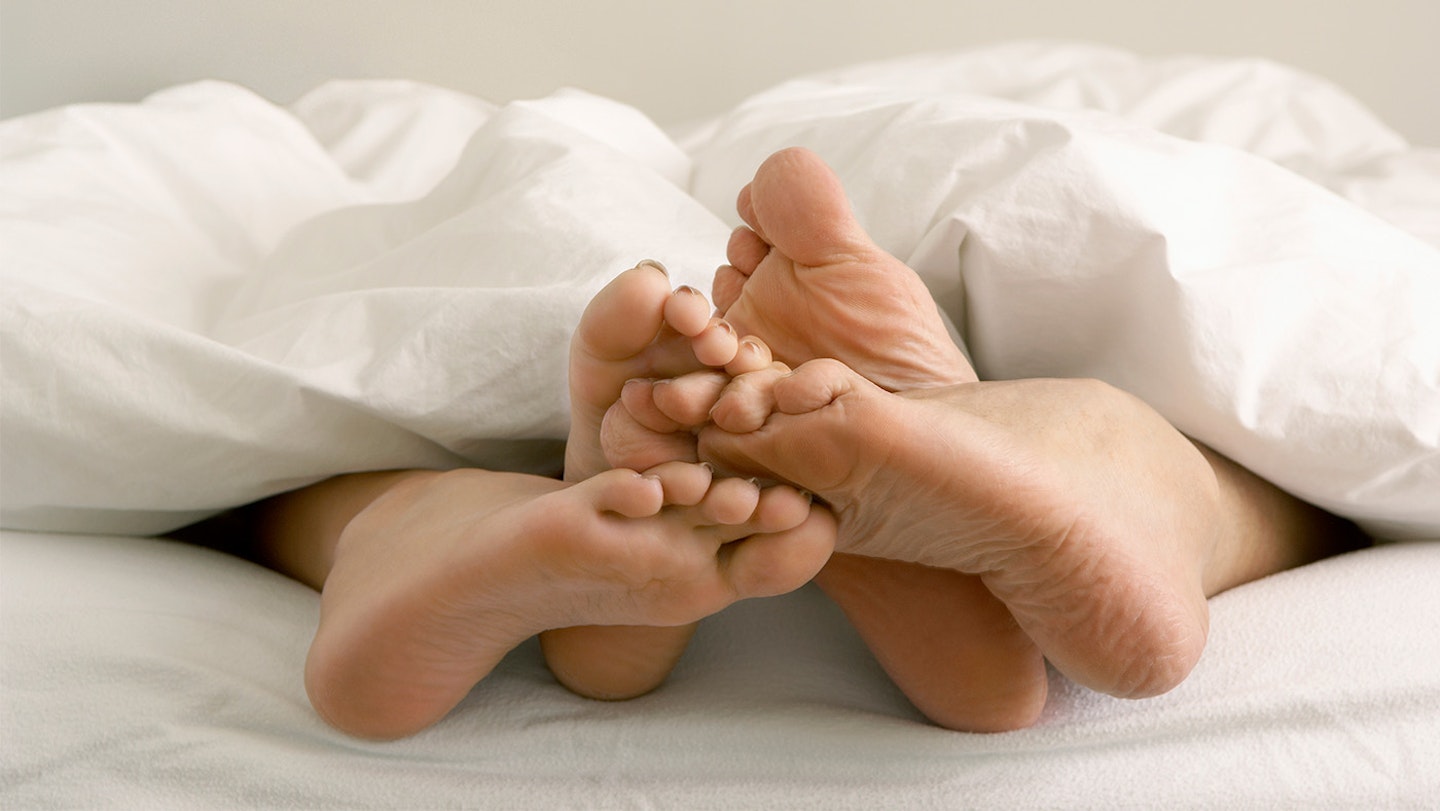Recovering from a c-section can take a while. While getting intimate is probably the last thing on your mind right now, knowing how long to wait until having sex after having a c-section is important.
Although you might think having sex after a c-section might be easier than sex after a vaginal birth due to less trauma to the vaginal area, it's still common for women who have had a c-section to have struggles in the bedroom. This is especially common in the first few months after giving birth.
If you're wondering when you can have sex again after your c-section, we've put together a helpful guide. We've included the risks, recovery and things to be aware of before normal bedroom activity resumes.
When can I have sex after a c-section?
Like with every postpartum journey, everyone's body is different and recovers at different rates. Although there's no set rule for all, many women feel comfortable returning to intercourse between four and six weeks after giving birth.
Remember, you should only start having sex again once your obstetrician or health visitor has given you the go-ahead.
Recovery after a c-section
Whether you've had an elective c-section or natural c-section, it's a good idea to wait until your cervix has closed fully before resuming normal sexual activity. This usually takes around six weeks. During this time, you may find that things like sleeping comfortably and breastfeeding are also difficult.
Looking after your c-section scar is important, but it's common to still feel discomfort around the scar area after the six-week mark. This may include feelings of numbness and tingling sensations. These feelings are normal, but if you notice they get worse or you develop a fever you should seek help from your GP.

Easing yourself into sex after c-section
Just like the first time you exercise again after your c-section, it's normal to feel a little fearful about having sex for the first time after your body has been through childbirth. It's important to take your time, speak to your partner along the way and let them know how you're feeling both physically and mentally towards sex.
Keep in mind that some women experience sexual dysfunction after a c-section. If you are finding sex unusually painful, speak to your GP.
Best positions for sex after a c-section
"Your core and abdomen are likely to feel tender and weak for a while after your c-section so positions, where your partner is not placing weight onto you, will likely be most comfortable," says Midwife Pip, midwifery sister, speaker and publisher. "Experimenting and communicating to ensure you feel comfortable is important for sex after a c-section."
Start by trying some relaxing foreplay. This might involve a massage before trying some sex positions that feel comfortable for you and your body. You might find it easier to use more lubrication than usual too. Sex toys may also be helpful for getting you in the mood.
Tips for sex after c-section
There is no right or wrong time to wait before having sex after a c-section and everyone’s recovery will be unique to them and their body. "Many women will choose to wait until they have stopped bleeding and their wound feels comfortable," explains Pip. "Sleep deprivation coupled with the sudden drop in Oestrogen in the postpartum, and during breastfeeding, can reduce libido and contribute to vaginal dryness. It can be useful to communicate with your partner about how you feel about sex and, if needed, to explore other ways to feel close and intimate until you are physically and psychologically ready."

What are the risks of sex after a c-section?
Rushing into sex before your body and mind feel ready may lead to pain, bleeding or infection. If you are unsure whether it is safe for you to resume sex, speak with your GP.
When to see your doctor
"If you notice any oozing or redness around your wound, increase in vaginal bleeding, passing of clots or offensive discharge, pain or swelling in your legs, or concerns about your mental wellbeing, it is important to speak with your doctor," Pip recommends.
How to do Kegel exercises after a c-section
As soon as your catheter is removed, you can try to resume pelvic floor exercises such as a Kegel squeeze, this should not cause any pain or discomfort.
"Start doing these in a relaxed seated position around three times a day and aim to increase to standing over the coming weeks or months," says Pip. "Should you experience any leaking or sensation of heaviness it is important to see a pelvic health physiotherapist."
To do a round of Kegels: imagine you are holding in wind and lifting your vagina, aim for 10 squeezes of up to 10 seconds followed by a 10-second relax and then 10 short, sharp squeezes.
Birth control options after a c-section
You can conceive very quickly after having a baby, so contraception is an important consideration. "There are options that can be started straight away and others that may require waiting a few weeks, depending on your medical history your doctor will be able to advise on the most appropriate methods," explains Pip.
About the expert
This article contains expert advice from Midwife Pip, an experienced, practising Midwifery Sister, MSc graduate, founder of Midwife Pip Podcast, Hypnobirthing and Antenatal Educator, co-author of published research and importantly, a mum.
